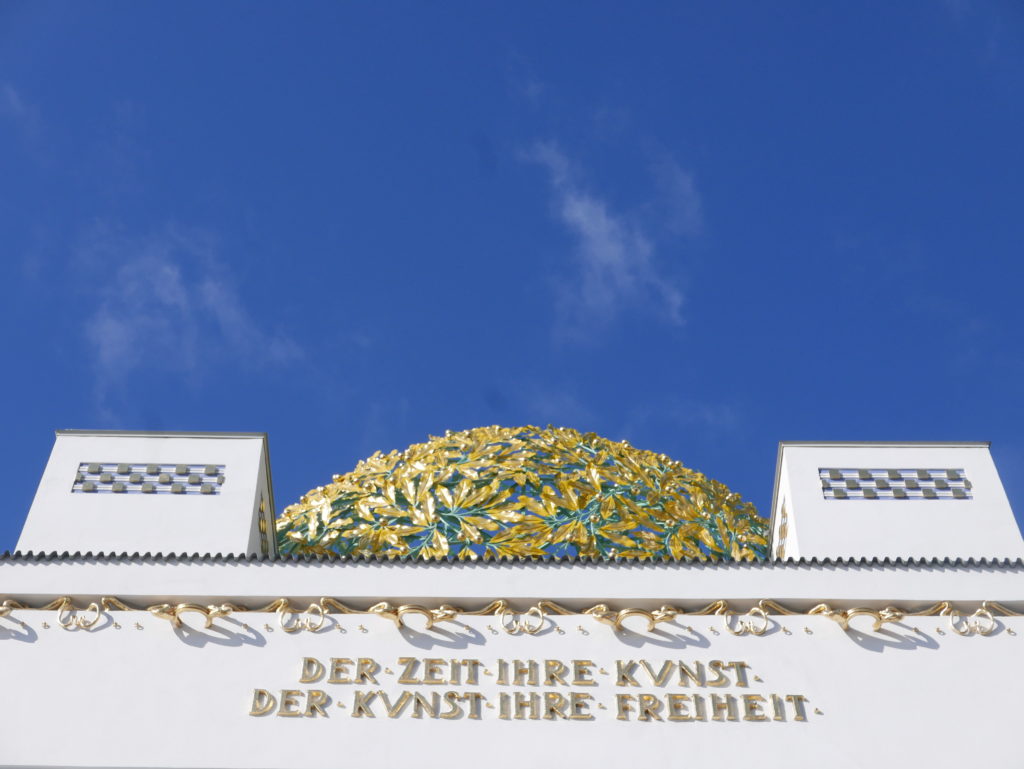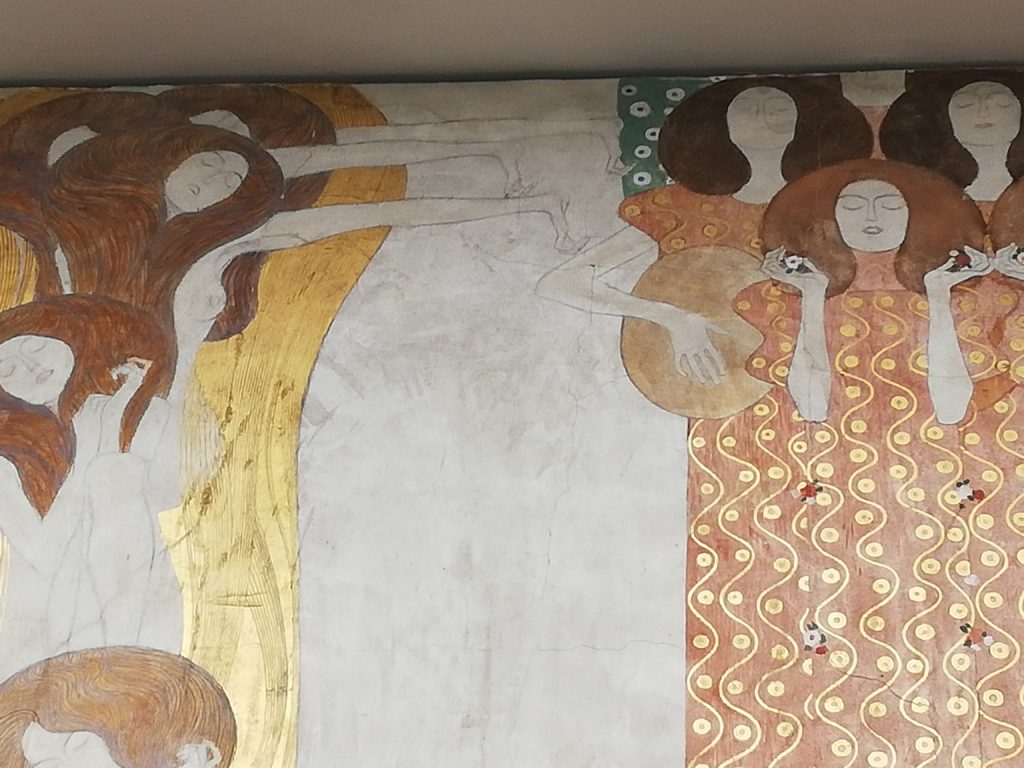The Beethoven Frieze – Secession Building Vienna
Before reading my words, stop.
Put on your headphones, pump up that volume and listen to this in a loop: https://www.youtube.com/watch?v=vSPYFTeSmDU.
It is the “Ode to Joy”. It is the most famous composition by Friedrich Schiller, German playwright and poet. Beethoven selects some pieces for his Ninth Symphony. The main and inspiring theme of this work is the brotherhood of all human beings, as well as the exaltation of joy, a goal that Man can only achieve by freeing himself from evil, selfishness and hatred.
Okay, now we can start with my story.
If you happen to travel to Vienna, I think you should visit the Secession House. I get there on a rainy afternoon in early February 2020. “Der Zeit Ihre Kunst, der Kunst Ihre Freiheit”, or “To every age its art, to every art its freedom”, says the motto written in gold above the entrance door. During a very dark time, around 1938, the inscription is removed. But it came back, stronger and shinier than before.
3000 gold-covered leaves create a perforated dome and adorn the roof of this building which was the official exhibition space for the Secessionists. I feel like I am entering a temple: I feel like I am an initiate to beauty, to art, to the force through which the imagination frees us from the chains of normalcy.
From the entrance, you walk downstairs to a lower floor where you enter the Beethoven Frieze.
I am given a pair of headphones. It must be the audio-guide, but no, I am wrong: it is precisely the Ode to Joy. It seems like the music, with its lightness and its freedom, can almost enter my bones as I wander along with the other visitors along the 34 meters that make Klimt’s work.
I smile, I smile because in those minutes I am purely happy.
Klimt created the Frieze for one of the Secessionists’ exhibitions in the early 1900s. At the centre of the exhibition was a bust – now disappeared – of Beethoven, from which the title of the work originates. The 34 metres are divided into three parts: they begin with the “Search for happiness”, then move towards a clash with the “Hostile Forces” and end with the triumph of the “Ode to Joy”.
I go back and forth several times and stay at least an hour. The Frieze is at least a couple of metres from the floor, so I realise that I wander around nose up. Paradoxically, this room reminds me of another art place: the Church of San Lorenzo in Piazza Castello in Turin. Here too, when you enter you immediately look up, you tend towards Light, towards Hope.
I follow the Knight who is the protagonist of Klimt’s story along the walls. He is broken when he meets the tempting Gorgons (https://en.wikipedia.org/wiki/Gorgon) and Typhoeus, a gorilla that portrays the awful typhoid which plagued European cities in the 19th century.
But the music continues smoothly in my eyes: it feels like it’s caressing and encouraging my soul.
The knight loses his armour, but frees himself from the monsters of the Hostile Forces.
He reaches redemption from the duality of Good and Evil through Art and Poetry that are portrayed with many shades of gold.
He passes through a chorus of beautiful women and finally takes refuge in an immense embrace, a kiss that goes out to the whole world. For Klimt and the Secessionists who loved utopia, only Art is saving Grace.
At the end of his journey, the Knight is naked, muscular and is seen from behind, but his feet are tied to those of a woman. Both bodies seem to fly in a cloud of water. Hope, lightness and kindness triumph.



